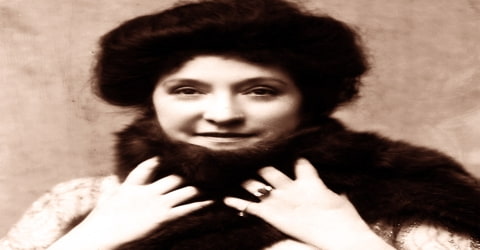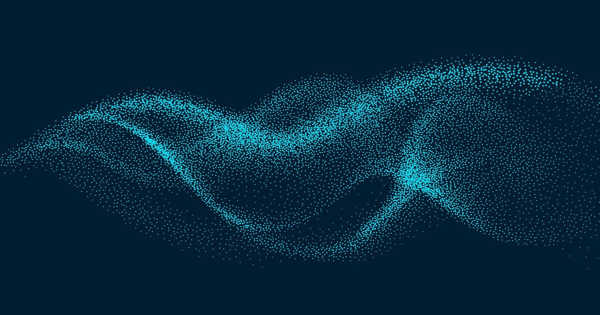Biography of Max Planck
Max Planck – German theoretical physicist.
Name: Max Karl Ernst Ludwig Planck
Date of Birth: 23 April 1858
Place of Birth: Kiel, Duchy of Holstein
Date of Death: 4 October 1947 (aged 89)
Place of Death: Göttingen, Lower Saxony, Germany
Spouse/Ex-: Marie Merck (1887–1909), Marga von Hösslin (1911–1947)
Father: Johann Julius Wilhelm Planck
Mother: Emma Patzig
Children: Emma Planck, Erwin Planck, Grete Planck, Hermann Planck, Karl Planck
Fields: Physics
Early Life
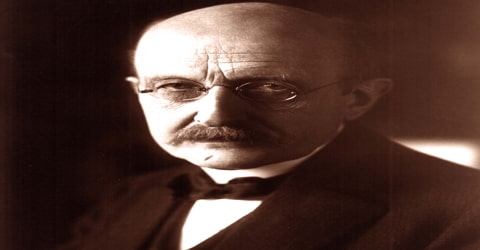
Max Planck, in full Max Karl Ernst Ludwig Planck was born on 23 April 1858 in Kiel, Duchy of Holstein. He was a German theoretical physicist whose discovery of energy quanta won him the Nobel Prize in Physics in 1918.
He had five older siblings. His father, Johann Julius Wilhelm Planck, was a professor in law, and his mother, Emma Patzig, was his father’s second wife. In 1867 the family moved to Munich, and Planck enrolled in the Maximilians gymnasium school, where he came under the tutelage of Hermann Müller, a mathematician who took an interest in the youth and taught him astronomy and mechanics as well as mathematics. It was from Müller that Planck first learned the principle of conservation of energy. Planck graduated early, at age 17. This is how Planck first came in contact with the field of physics.
Max Planck changed physics and our understanding of the world forever when he discovered that hot objects do not radiate a smooth, continuous range of energies as had been assumed in classical physics. Instead, he found that the energies radiated by hot objects have distinct values, with all other values forbidden. This discovery was the beginning of quantum theory – an entirely new type of physics – which replaced classical physics for atomic-scale events.
This theory revolutionized our understanding of atomic and subatomic processes, just as Albert Einstein’s theory of relativity revolutionized our understanding of space and time. Together they constitute the fundamental theories of 20th-century physics. Both have forced humankind to revise some of the most-cherished philosophical beliefs, and both have led to industrial and military applications that affect every aspect of modern life.
Of high intelligence, showing brilliance in mathematics, science, and music, Planck was a deeply thoughtful, ethical man. He experienced a long life, living almost 90 years. In his later years, he lived in Germany through the great depression and both world wars, suffering a succession of personal tragedies.
In 1948 the German scientific institution the Kaiser Wilhelm Society (of which Planck was twice president) was renamed the Max Planck Society (MPS). The MPS now includes 83 institutions representing a wide range of scientific directions.
Childhood, Family and Educational Life

Max Karl Ernst Ludwig Planck was born in Kiel, on the north coast of Germany, on April 23, 1858. He had five older siblings. Planck was born in Kiel, Holstein, to Johann Julius Wilhelm Planck and his second wife, Emma Patzig. He was baptized with the name of Karl Ernst Ludwig Marx Planck; of his given names, Marx (a now obsolete variant of Markus or maybe simply an error for Max, which is actually short for Maximilian) was indicated as the “appellation name”. However, by the age of ten, he signed with the name Max and used this for the rest of his life. He was the 6th child in the family, though two of his siblings were from his father’s first marriage.
Planck came from a traditional, intellectual family. His paternal great-grandfather and grandfather were both theology professors in Göttingen.
His father, Johann Planck, was a law professor who came from an academic family. Max’s mother’s name was Emma Patzig. Her father was an accountant. Emma was lively and well-liked in the academic circles Max’s family moved in. Max attended elementary school in Kiel. In 1867, when he was 9 years old, his family relocated over 500 miles to Munich in southern Germany, where his father had been offered a tempting professorship.
In Munich, Planck took admission in the Maximilians Gymnasium School where he was tutored in mathematics, astronomy, and physics by a mathematician named Hermann Muller. He graduated from school when he was 17.
Planck was gifted when it came to music. He took singing lessons and played piano, organ and cello, and composed songs and operas. However, instead of music, he chose to study physics. In 1874, Max Planck took admission in the University of Munich in order to study physics.
Planck spent a year at the University of Berlin in 1877 since the university was known to be the stomping ground of the eminent physicists like Hermann von Helmholtz and Gustav Kirchoff. But he was not impressed by what he saw. He returned to Munich the following year and in 1879, when he was only 21, he was awarded his doctoral degree for the thesis related to the second law of thermodynamics.
In June 1880, he presented his habilitation thesis, Gleichgewichtszustände isotroper Körper in verschiedenen Temperaturen (Equilibrium states of isotropic bodies at different temperatures).
Personal Life
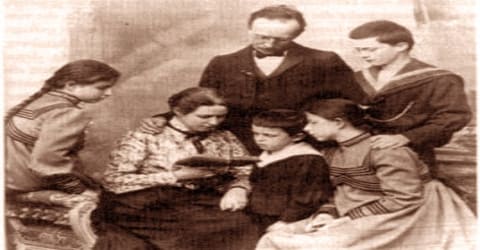
In March 1887 Planck married Marie Merck (1861–1909), sister of a school fellow, and moved with her into a sublet apartment in Kiel. They had four children: Karl (1888–1916), the twins Emma (1889–1919) and Grete (1889–1917), and Erwin (1893–1945). Marie died in 1909, possibly from tuberculosis.
In March 1911 Planck married his second wife, Marga von Hoesslin (1882–1948); in December his fifth child Hermann was born.
During the First World War Planck’s second son Erwin was taken prisoner by the French in 1914, while his oldest son Karl was killed in action at Verdun. Grete died in 1917 while giving birth to her first child. Her sister died the same way two years later, after having married Grete’s widower. Both granddaughters survived and were named after their mothers. Planck endured these losses stoically.
In January 1945, Erwin, to whom he had been particularly close, was sentenced to death by the Nazi Volksgerichtshof because of his participation in the failed attempt to assassinate Hitler in July 1944. Erwin was executed on 23 January 1945.
Career and Works
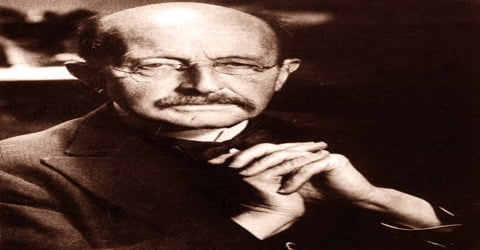
In 1914 Planck and the physical chemist Walther Hermann Nernst succeeded in bringing Einstein to Berlin, and after the war, in 1919, arrangements were made for Max von Laue, Planck’s favorite student, to come to Berlin as well. When Planck retired in 1928, another prominent theoretical physicist, Erwin Schrödinger, the originator of wave mechanics, was chosen as his successor. For a time, therefore, Berlin shone brilliantly as a center of theoretical physics until darkness enveloped it in January 1933 with the ascent of Adolf Hitler to power.
After his year in Berlin, Planck returned to Munich in late 1878 where he passed his state exam allowing him to teach physics in high schools.
A few months later, in February 1879, he submitted a doctoral thesis concerning the second law of thermodynamics. Three months later he defended his thesis in an oral examination and age 21 was awarded a Ph.D. in physics with the highest honors – summa cum laude.
With the completion of his habilitation thesis, Planck became an unpaid Privatdozent (German academic rank comparable to lecturer/assistant professor) in Munich, waiting until he was offered an academic position. Although he was initially ignored by the academic community, he furthered his work on the field of heat theory and discovered one after another the same thermodynamical formalism as Gibbs without realizing it. Clausius’s ideas on entropy occupied a central role in his work.
At age 22, Planck became a physics lecturer (unpaid) at the University of Munich. Without any salary, he continued living with his parents. His research focused on entropy a quantity sometimes defined in a loose sense as a measure of the amount of disorder at the atomic level. In 1885, the University of Kiel appointed him as an associate professor.
In 1889, following the death of Gustav Kirchhoff, a position was vacant at the University of Berlin and Max Planck was invited to fill that position. In 1892, Planck was appointed as a full professor there and continued to work in Berlin till the end of his career.
One of his students, the British chemist James Partington, described Planck’s lectures:
“using no notes, never making mistakes, never faltering; the best lecturer I ever heard. There were always many standing around the room. As the lecture-room was well heated and rather close, some of the listeners would from time to time drop to the floor, but this did not disturb the lecture”.
Two of Planck’s Ph.D. students would later win Nobel Prizes in physics: Max von Laue and Walther Bothe.
Max Planck started working on blackbody radiation in 1894 at the behest of corporations which wanted to produce light bulbs that produced a lot of light but without consuming too much electricity. After a period of doubt and frustration when the work could not be accomplished; Planck came up with the Planck black-body radiation law six years after first starting work on the project.
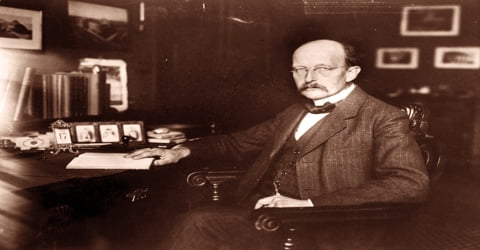
Planck’s first proposed solution to the problem in 1899 followed from what Planck called the “principle of elementary disorder”, which allowed him to derive Wien’s law from a number of assumptions about the entropy of an ideal oscillator, creating what was referred to as the Wien–Planck law. Soon it was found that experimental evidence did not confirm the new law at all, to Planck’s frustration. Planck revised his approach, deriving the first version of the famous Planck black-body radiation law, which described the experimentally observed black-body spectrum well. It was first proposed in a meeting of the DPG on 19 October 1900 and published in 1901.
In his quest to prove the Planck black-body radiation law; Planck went through several approaches and finally settled on one that could be regarded as the first time that the concept of quantum physics was propounded. It was something completely different from the known studies of physics at the time and his thoughts on quantum theory were laid down in the book ‘Thermodynamics’ published in 1897 as well as in the book ‘Theory of Heat Radiation’ published in 1906. He was awarded the Nobel Prize in Physics for opening up this particular branch of physics.
In November 1900, Planck revised this first approach, relying on Boltzmann’s statistical interpretation of the second law of thermodynamics as a way of gaining a more fundamental understanding of the principles behind his radiation law. As Planck was deeply suspicious of the philosophical and physical implications of such an interpretation of Boltzmann’s approach, his recourse to them was, as he later put it, “an act of despair … I was ready to sacrifice any of my previous convictions about physics.”
The central assumption behind his new derivation, presented to the DPG on 14 December 1900, was the supposition, now known as the Planck postulate, that electromagnetic energy could be emitted only in quantized form, in other words, the energy could only be a multiple of an elementary unit:
E = hv
Where h is Planck’s constant, also known as Planck’s action quantum (introduced already in 1899), and ν is the frequency of the radiation. Note that the elementary units of energy discussed here are represented by hν and not simply by ν. Physicists now call these quanta photons, and a photon of frequency ν will have its own specific and unique energy. The total energy at that frequency is then equal to hν multiplied by the number of photons at that frequency.
Planck had not intended to overthrow classical physics. His intention was to find a theory that matched experimental observations. Nevertheless, the implications of his discovery were momentous. Quantum theory – the realization that nature has ‘allowed’ and ‘forbidden’ states – had been born and the way we interpret nature would never be the same again.
After being appointed as a professor at the University of Berlin, Max Planck wanted to bring together all the physical societies present in his native Germany under one roof and it was because of him that the Physical Societies of Germany came into being in the year 1898. Planck also served as the President of the society for four years later on.
Max Planck retired from the University of Berlin in 1928 and his later years were largely unhappy due to the rise of the Nazis under Adolf Hitler. Although he was completely at odds with the philosophy of the Nazis he decided to stay back in Germany and asked other scientists to do as well.
Awards and Honor
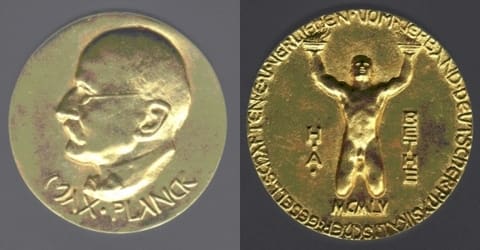
Max Planck was awarded the Nobel Prize in Physics in 1918 for establishing a new branch of study in physics.
He was awarded the coveted Lorentz Medal in 1927 and the Copley Medal in 1929.
Max Planck Medal – 1929
Pour Le Mérite – 1915
Franklin Medal – 1927
Goethe Prize – 1945
Adlerschild Des Deutschen Reiches – 1928
Death and Legacy
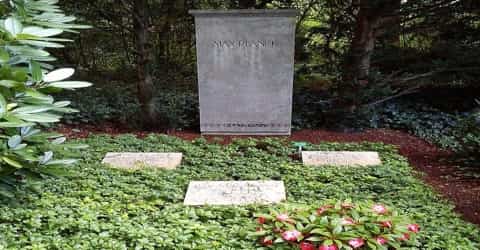
When the Nazis came to power in 1933, Planck was 74. He witnessed many Jewish friends and colleagues expelled from their positions and humiliated, and hundreds of scientists emigrated from Nazi Germany. Again he tried to “persevere and continue working” and asked scientists who were considering emigration to remain in Germany. Nevertheless, he did help his nephew, the economist Hermann Kranold to emigrate to London after his arrest. He hoped the crisis would abate soon and the political situation would improve.
Max Planck died at the age of 89 on 4 October 1947 in Gottingen. His grave is situated in the old Stadtfriedhof (City Cemetery) in Göttingen. Marga’s and Hermann’s graves lie beside him.
During the Second World War, the increasing number of Allied bombing missions against Berlin forced Planck and his wife to temporarily leave the city and live in the countryside. In 1942 he wrote: “In me, an ardent desire has grown to persevere this crisis and live long enough to be able to witness the turning point, the beginning of a new rise.” In February 1944 his home in Berlin was completely destroyed by an air raid, annihilating all his scientific records and correspondence. His rural retreat was threatened by the rapid advance of the Allied armies from both sides.
In 1948, Germany’s Kaiser Wilhelm Society was renamed, becoming The Max Planck Society as a tribute to the man who held its presidency twice and gave birth to quantum theory. Today The Max Planck Society is one of the most successful scientific organizations in the world, running over 80 scientific institutions. Since the 1950s research workers from the Max Planck Institutes have been awarded four Nobel Prizes in physics, eight in chemistry, and six in medicine.
Information Source:


